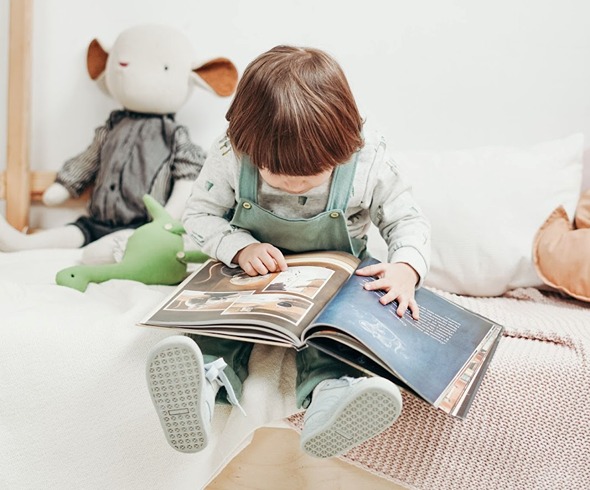10 Essential Tips for Succeeding in Online Courses & Degree Programs
The popularity of online education has soared in recent years. More and more people are opting for online courses and degree programs because of their flexibility and convenience. Whether you’re a working professional, a stay-at-home parent, or someone looking to further their education, online learning can be a great option.
However, succeeding in an online course requires a different set of skills and strategies compared to traditional classroom settings. Listed below are some essential tips to help you succeed in your online courses and degree programs:
1. Set Clear Goals & Objectives
Setting clear goals is the first step toward success in any endeavor, and online education is no different. Before starting your course, take some time to define what you want to achieve. Ask yourself why you are taking the course and what you hope to gain from it. Set both short-term and long-term goals.
Short-term goals might include completing weekly assignments on time, while long-term goals could be finishing the course with a certain grade or applying the knowledge to your job.
2. Prepare for Job & Career Fairs
Doing well in online courses is not just about earning good grades but also about preparing yourself for success in the job industry. Start by identifying the skills and knowledge that are in demand in your chosen field. For instance, if you want to pursue an online degree in healthcare administration, you need to engage in activities and projects that can help you develop relevant skills.
So, the next time you wonder what jobs can you get with a healthcare administration degree, consider:
- Attending Virtual Career Fairs
- Joining Professional Organizations
- Connecting with Industry Professionals, etc.
Additionally, work on building a strong resume and practicing your interview skills. By preparing for the job industry while you study, you can transition smoothly from your online course to a successful career.
3. Consistent Study Schedule
Consistency is key when it comes to online learning. Developing a consistent study schedule will help you manage your time effectively and ensure you stay on track with your coursework. Start by creating a daily or weekly study timetable that fits into your routine. Allocate specific times for attending lectures, completing assignments, and revising for exams.
Let’s assume you intend to pursue a degree online and want to ensure good grades. Having a study schedule can provide the discipline needed to successfully complete your degree and achieve your career goals.
4. Dedicated Study Space
Having a dedicated study space can make a big difference in your productivity and concentration. Find a quiet and comfortable place in your home where you can study without interruptions. Make sure your study space is well-organized and free from distractions.
This means keeping your study materials, computer, and other necessary items within reach and removing anything that might divert your attention, like your phone or TV. A good internet connection is also essential for online learning, so make sure your study space has a reliable internet connection. Creating a dedicated study space will help you stay focused and make the most of your study time.

5. Utilize Available Resources
One of the advantages of online learning is the abundance of resources available at your fingertips. Make sure to explore and utilize all the materials and resources provided by your instructor. This includes lecture notes, readings, videos, and any supplementary materials. Additionally, to enhance your learning, you can take advantage of:
- Online Libraries
- Discussion Forums
- Other Resources, etc.
Don’t hesitate to reach out to your instructor during virtual office hours if you have questions or need clarification on any topic. Utilizing available resources will deepen your understanding of the course material and help you succeed.
6. Stay Engaged & Participate Actively
Active participation is crucial for success in online courses. Engage with your peers and instructors through online discussions, group activities, and collaborative projects. Participate in discussion forums and share your thoughts and insights on the course material. Engaging with your peers can provide different perspectives and help you understand the material better.
Forming study groups with fellow students can also be beneficial for discussing concepts and preparing for exams. Don’t be afraid to ask questions and seek clarification when needed. Staying engaged and participating actively will enrich your learning experience and help you stay motivated.
7. Practice Time Management
Time management is essential for balancing your studies with other commitments. Prioritize your tasks and manage your time efficiently to avoid last-minute stress. Use tools like calendars, planners, and apps to keep track of deadlines and commitments.
Break down your assignments and tasks into smaller, manageable chunks, and set deadlines for each part. Avoid procrastination by starting your tasks early and working on them consistently. Practicing effective time management will help you stay organized, reduce stress, and ensure you meet all your deadlines.
8. Develop Digital Literacy Skills
Being comfortable with technology is crucial for succeeding in online courses. Digital literacy means knowing how to use computers, the internet, and online learning platforms effectively. Start by familiarizing yourself with the software and tools required for your course. This might include:
- Video Conferencing Tools
- Online Discussion Boards
- Digital Libraries, etc.
Take some time to learn how to navigate these online resources and platforms and make the most of their features. Additionally, staying updated with the latest technology and software can be beneficial. If you encounter any technical issues, don’t hesitate to seek help from technical support or your instructor. Developing strong digital literacy skills will make your online learning experience smoother and more enjoyable.
9. Build a Support Network
Having a support network can provide you with the encouragement and assistance you need to succeed in your online courses. Connect with your fellow students through online forums, social media, and study groups. Sharing experiences and tips with your peers can be very beneficial.
Additionally, seek advice and mentorship from alumni or professionals in your field of study. Don’t hesitate to reach out to your instructors if you need help or guidance. Building a support network will provide you with a sense of community and make your online learning experience more enjoyable and less isolating.
10. Adapt Learning Styles
Everyone has a unique learning style, and understanding yours can help you succeed in online courses. Some people learn best by reading and writing, while others prefer listening or hands-on activities. Identify your preferred learning style and adapt your study methods accordingly.
If you are an auditory learner, listen to lectures and discussions. Experiment with different study techniques to find what works best for you. Adapting to your learning style will make your study sessions more effective and enjoyable.
To Sum Up
Succeeding in online courses and degree programs requires a combination of self-discipline, effective strategies, and a positive mindset. You can implement these tips to make the most of your online learning experience and reach your educational and career goals.





 This article was written by Jenie Boone, Founder and
This article was written by Jenie Boone, Founder and 






